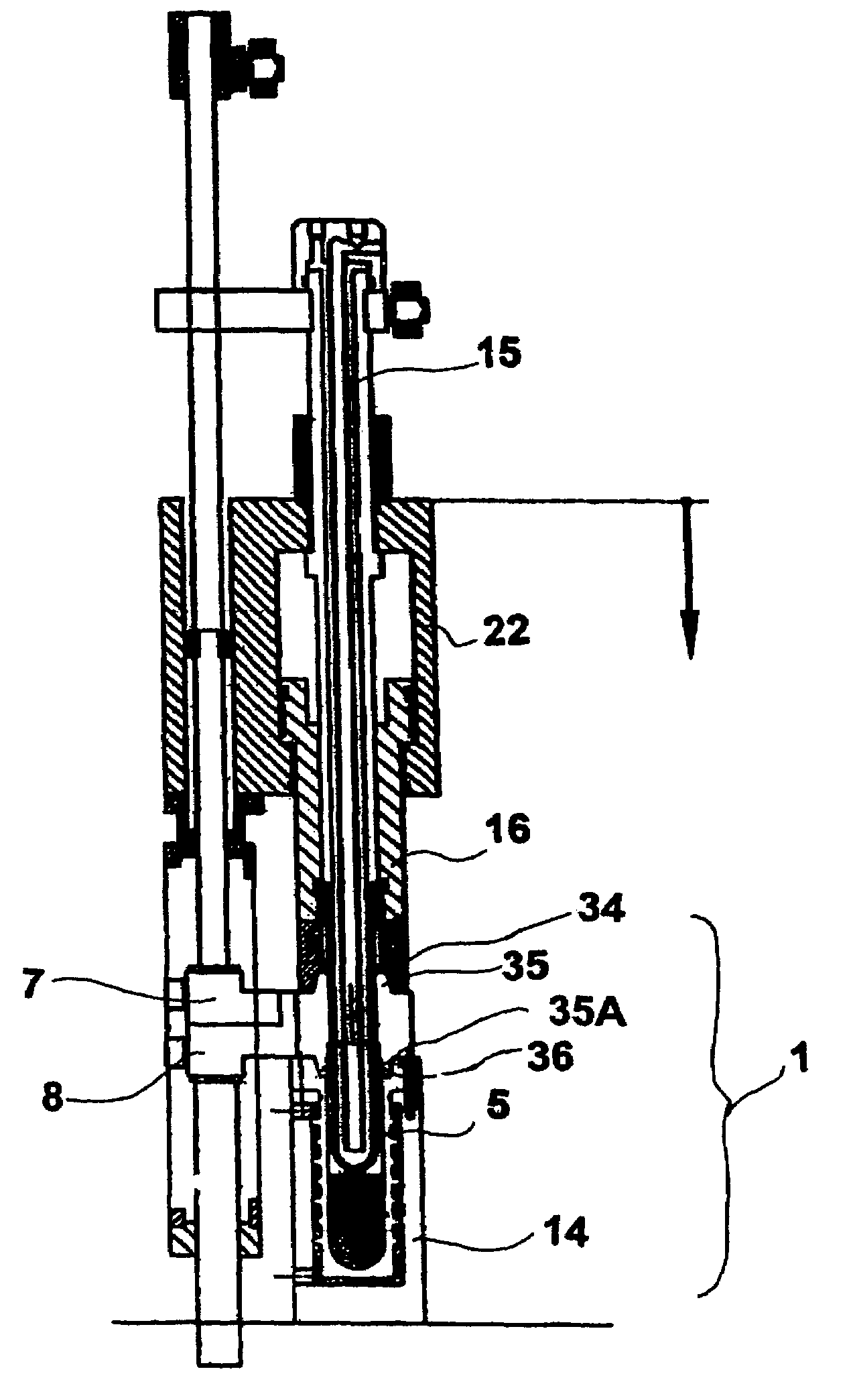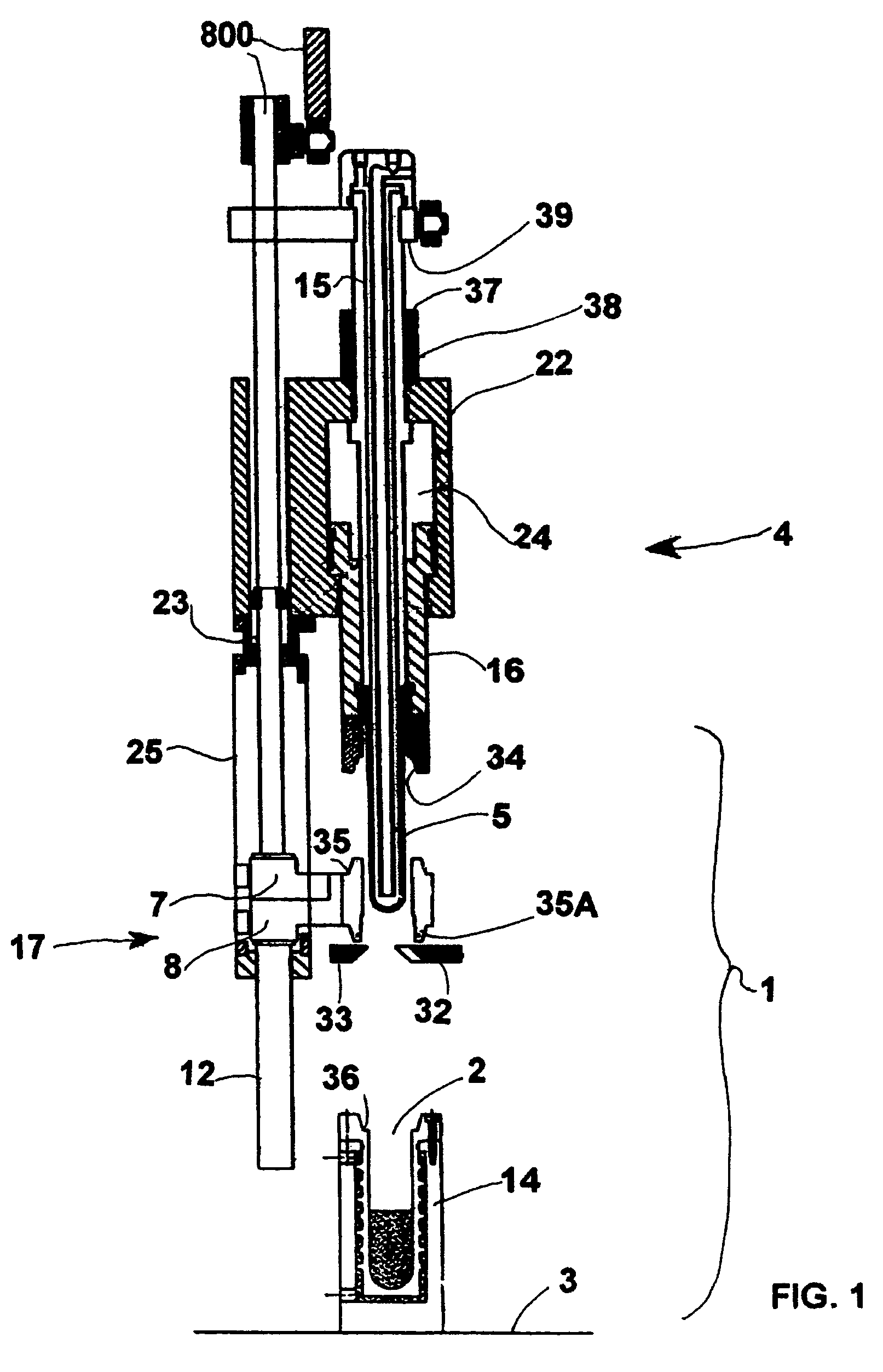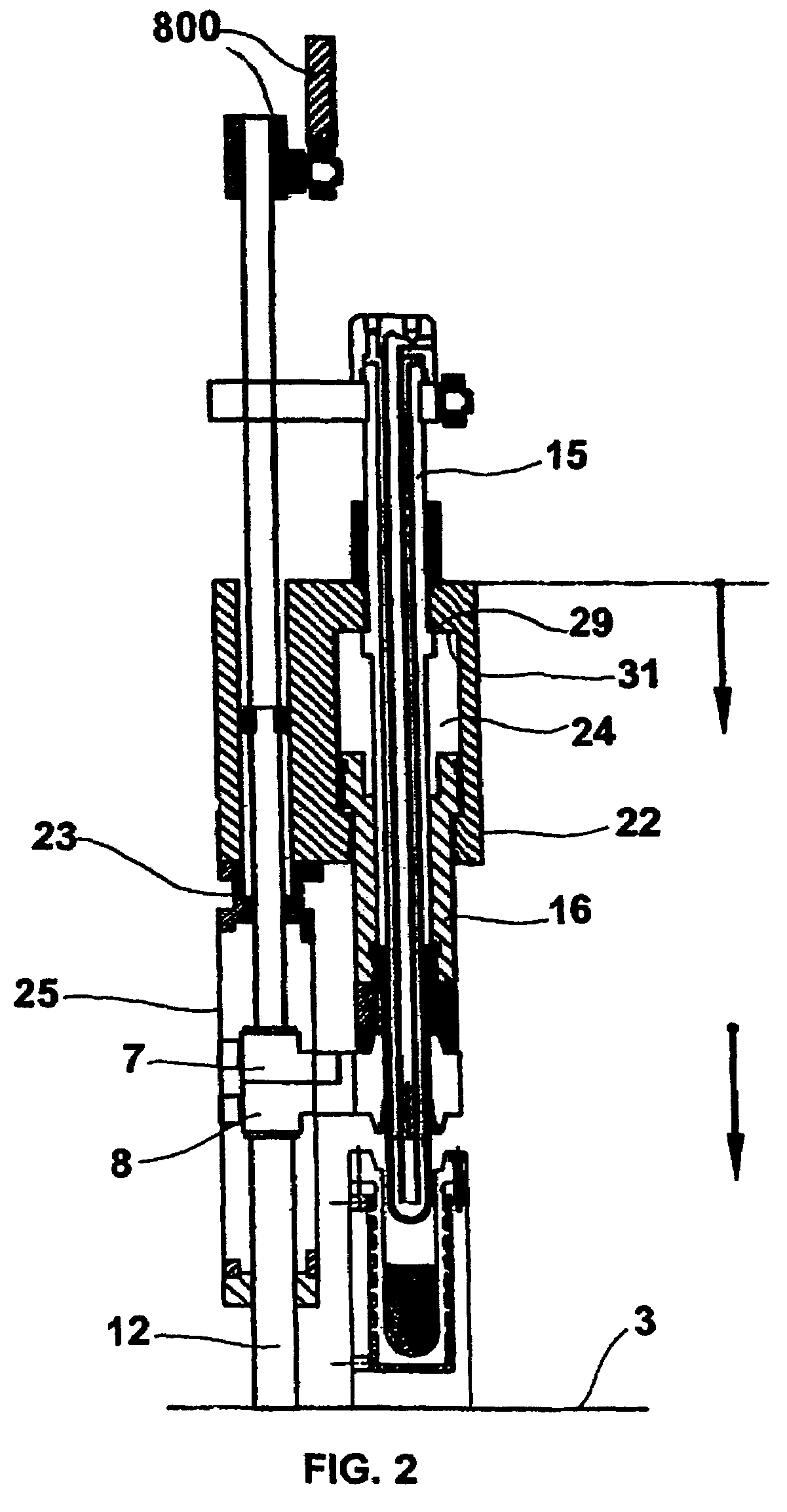Device and method for compression moulding plastic containers
a technology of plastic containers and compression moulds, which is applied in the direction of dough shaping, manufacturing tools, applications, etc., can solve the problems of difficult compression moulding, explosion in the blow molding phase, and difficult to obtain moulded pieces with particularly precise sizing tolerances, etc., to achieve less expensive, high compression force, and fast response time
- Summary
- Abstract
- Description
- Claims
- Application Information
AI Technical Summary
Benefits of technology
Problems solved by technology
Method used
Image
Examples
Embodiment Construction
[0033]In the following description, the terms “continuously operated press” and “continuously operated moulding unit” are used to refer to a device where the moulding cycle is carried out in several moulding cavities with a timing difference between the different cavities: for example, while a moulding cavity is opened to be filled, another unit is closing to compress, and a third unit is opened to remove the moulded workpiece. The terms “sequential press” and “sequential moulding unit” refer to a moulding device where the moulding cycle is executed simultaneously and without timing differences between the different moulding cavities: for example, all the moulding cavities are filled, or closed to compress, or opened to remove the moulded workpieces.
[0034]FIG. 1 shows a mould 1 suitable for compression mould of plastic objects comprising a female mould 14 where there is a moulding cavity 2 for depositing some plastic, for example, PET, PP, PS, PE, PVC, PEN, PBT, etc., in fluid form ...
PUM
| Property | Measurement | Unit |
|---|---|---|
| pressure | aaaaa | aaaaa |
| compression forces | aaaaa | aaaaa |
| diameter | aaaaa | aaaaa |
Abstract
Description
Claims
Application Information
 Login to view more
Login to view more - R&D Engineer
- R&D Manager
- IP Professional
- Industry Leading Data Capabilities
- Powerful AI technology
- Patent DNA Extraction
Browse by: Latest US Patents, China's latest patents, Technical Efficacy Thesaurus, Application Domain, Technology Topic.
© 2024 PatSnap. All rights reserved.Legal|Privacy policy|Modern Slavery Act Transparency Statement|Sitemap



